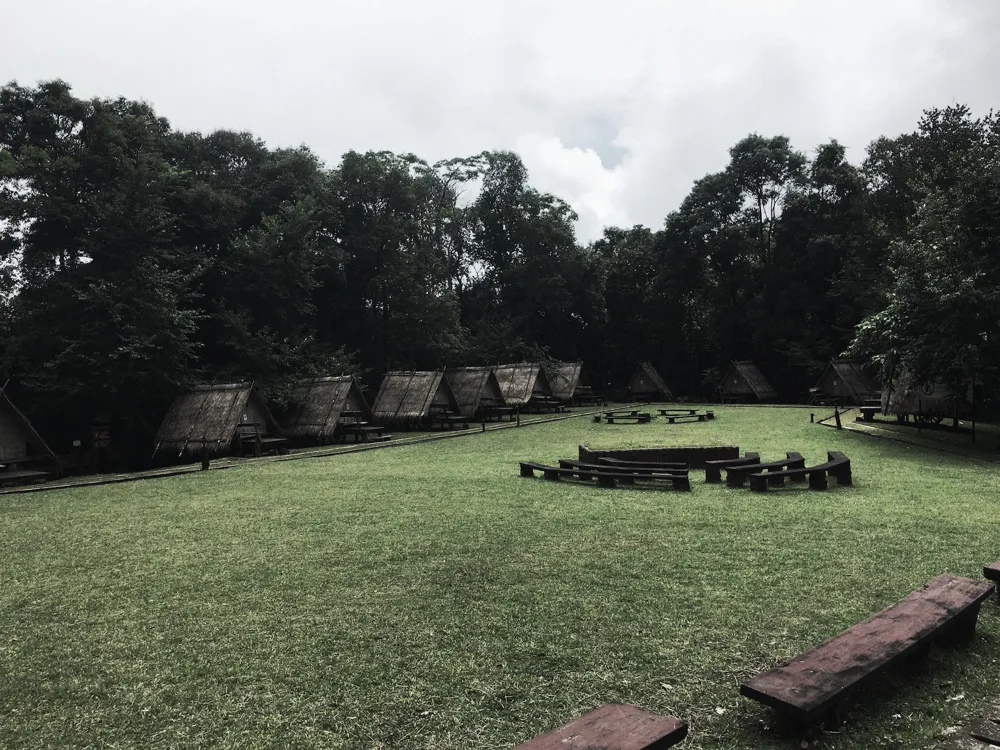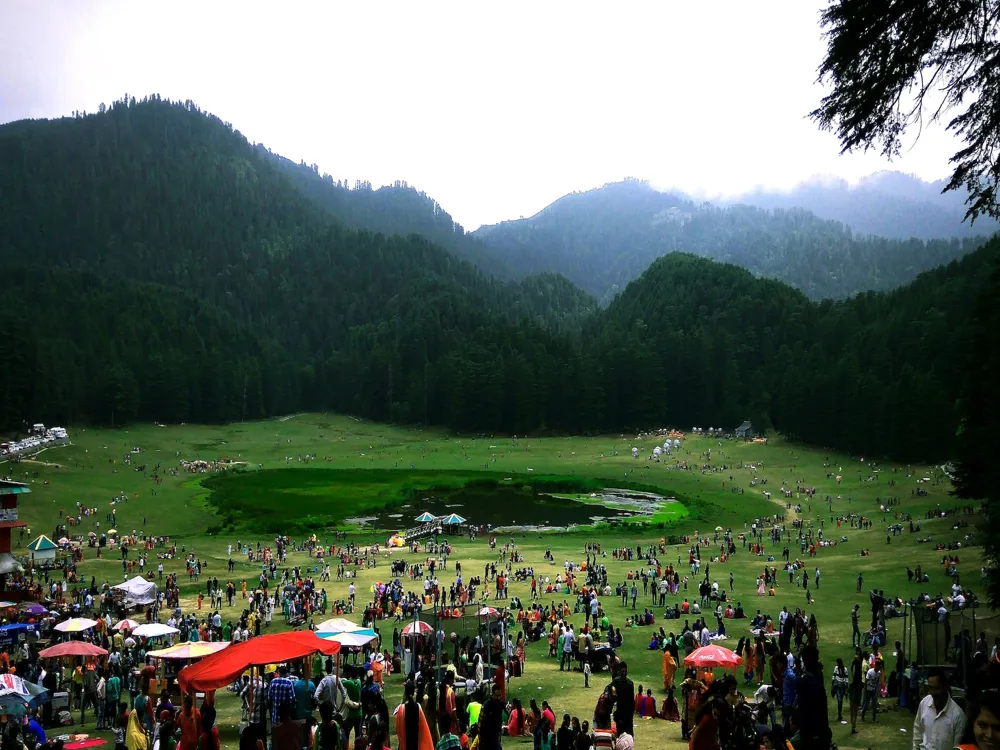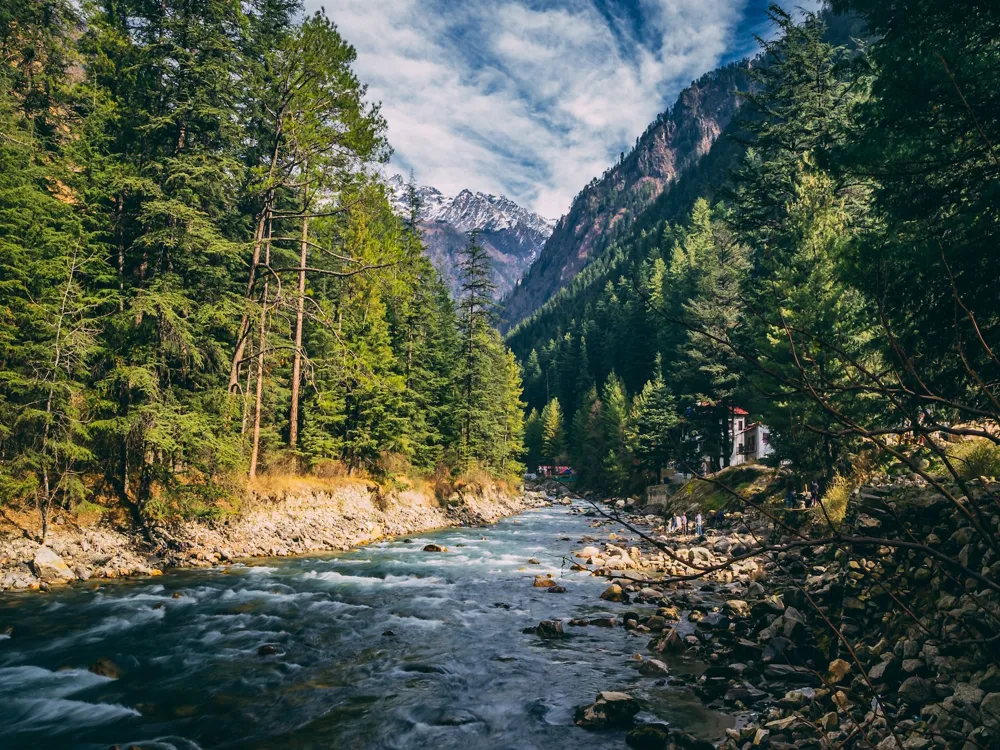Haripur, nestled in the scenic Kangra Valley of Himachal Pradesh, India, is a hidden gem with a rich cultural heritage and breathtaking natural beauty. This quaint town, surrounded by the majestic Dhauladhar range, offers a serene escape from the hustle and bustle of city life. Historically significant, Haripur dates back to the 8th century and has been a melting pot of various cultures and dynasties over the centuries.
The town's landscape is dotted with ancient temples and forts, reflecting a blend of Hindu and Tibetan architectural styles. Haripur's unique charm lies in its untouched natural splendor, sprawling tea gardens, and vibrant cultural festivals that attract visitors from far and wide. The local cuisine, influenced by Tibetan and North Indian flavors, is a gastronomic delight for food enthusiasts. The people of Haripur are known for their warm hospitality, making every visitor's experience memorable.
Haripur is not just a tourist destination but also an important site for historians and archaeologists, with its rich collection of artifacts and ancient structures that offer a glimpse into the region's glorious past. The town's tranquil environment also makes it a perfect spot for meditation and yoga, attracting wellness seekers from around the world.
The architecture of Haripur is a fascinating amalgamation of various styles and influences, reflecting the town's diverse cultural and historical background. The most prominent architectural features in Haripur are its ancient temples and forts, which exhibit a blend of Hindu and Buddhist influences. These structures are characterized by intricate carvings, ornate facades, and robust fortifications, standing as a testament to the skilled craftsmanship of the past.
The temples in Haripur are renowned for their elaborate woodwork and detailed stone carvings, featuring motifs from Hindu mythology. The use of locally sourced materials like stone, wood, and slate in these structures not only showcases the resourcefulness of the builders but also ensures that the buildings blend harmoniously with the natural surroundings. The Buddhist monasteries in the region exhibit Tibetan architectural elements, with colorful prayer flags, vibrant murals, and unique stupa designs.
The forts in Haripur, once the bastions of local rulers, are now captivating historical sites. These forts display a mix of military and residential features, with thick walls, watchtowers, and elegant courtyards. The fusion of Indian and Tibetan architectural styles in Haripur's buildings creates a unique visual tapestry that is both awe-inspiring and educational for visitors.
The ideal time to visit Haripur is between March to June and September to November, when the weather is pleasant, and the natural beauty of the region is at its peak.
Respect local customs and traditions. Dress modestly when visiting religious sites and always seek permission before taking photographs of the locals.
Haripur offers a range of accommodation options, from luxury resorts to homestays. Booking in advance is recommended, especially during peak tourist seasons.
Haripur is well-connected by road, rail, and air. The nearest airport is Kangra Airport, approximately 40 kilometers away. The nearest railway station is Pathankot, about 90 kilometers from Haripur. Regular bus services and taxis are available from these points to reach Haripur. For those driving, Haripur is connected via well-maintained roads and offers a scenic journey through the hills of Himachal Pradesh.
Overview of Haripur, Kangra, Himachal Pradesh
Architecture of Haripur
Tips When Visiting Haripur
Best Time to Visit
Local Customs and Etiquette
Accommodation
How To Reach Haripur
Haripur
Kangra
Himachal Pradesh
NaN onwards
View kangra Packages
Weather :
Tags : Village
Timings : All time
Time Required : 4-5 hrs
Entry Fee : No entry fee
Planning a Trip? Ask Your Question
Kangra Travel Packages
View All Packages For Kangra
Top Hotel Collections for Kangra

Private Pool

Luxury Hotels

5-Star Hotels

Pet Friendly
Top Hotels Near Kangra
Other Top Ranking Places In Kangra
View All Places To Visit In kangra
View kangra Packages
Weather :
Tags : Village
Timings : All time
Time Required : 4-5 hrs
Entry Fee : No entry fee
Planning a Trip? Ask Your Question
Kangra Travel Packages
View All Packages For Kangra
Top Hotel Collections for Kangra

Private Pool

Luxury Hotels

5-Star Hotels

Pet Friendly





















